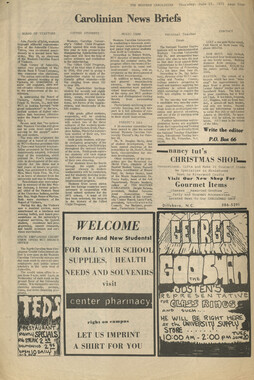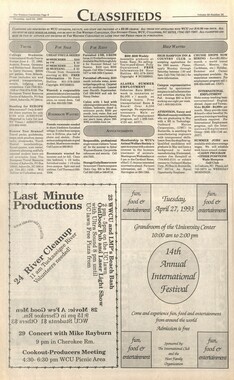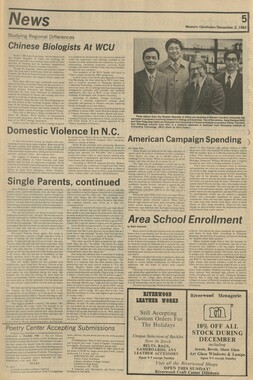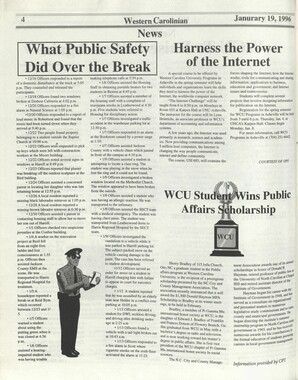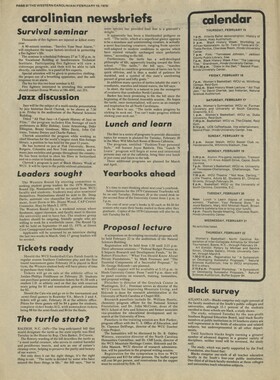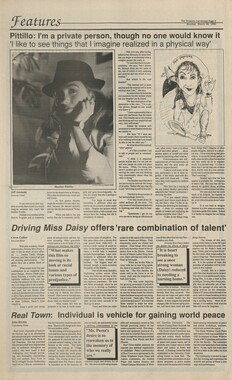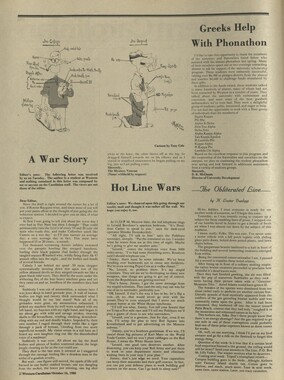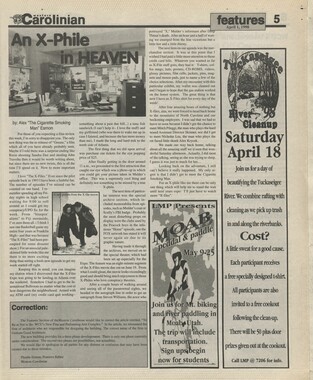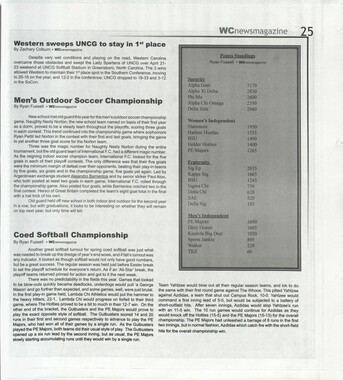Western Carolina University (20)
View all
- Canton Champion Fibre Company (2308)
- Cherokee Traditions (291)
- Civil War in Southern Appalachia (165)
- Craft Revival (1942)
- Great Smoky Mountains - A Park for America (2946)
- Highlights from Western Carolina University (430)
- Horace Kephart (941)
- Journeys Through Jackson (159)
- LGBTQIA+ Archive of Jackson County (85)
- Oral Histories of Western North Carolina (314)
- Picturing Appalachia (6873)
- Stories of Mountain Folk (413)
- Travel Western North Carolina (160)
- Western Carolina University Fine Art Museum Vitreograph Collection (129)
- Western Carolina University Herbarium (92)
- Western Carolina University: Making Memories (738)
- Western Carolina University Publications (2491)
- Western Carolina University Restricted Electronic Theses and Dissertations (146)
- Western North Carolina Regional Maps (71)
- World War II in Southern Appalachia (131)
University of North Carolina Asheville (6)
View all
- Allanstand Cottage Industries (62)
- Appalachian National Park Association (53)
- Bennett, Kelly, 1890-1974 (1463)
- Berry, Walter (76)
- Brasstown Carvers (40)
- Carver, George Washington, 1864?-1943 (26)
- Cathey, Joseph, 1803-1874 (1)
- Champion Fibre Company (233)
- Champion Paper and Fibre Company (297)
- Cherokee Indian Fair Association (16)
- Cherokee Language Program (22)
- Crowe, Amanda (40)
- Edmonston, Thomas Benton, 1842-1907 (7)
- Ensley, A. L. (Abraham Lincoln), 1865-1948 (275)
- Fromer, Irving Rhodes, 1913-1994 (70)
- George Butz (BFS 1907) (46)
- Goodrich, Frances Louisa (120)
- Grant, George Alexander, 1891-1964 (96)
- Heard, Marian Gladys (60)
- Kephart, Calvin, 1883-1969 (15)
- Kephart, Horace, 1862-1931 (313)
- Kephart, Laura, 1862-1954 (39)
- Laney, Gideon Thomas, 1889-1976 (439)
- Masa, George, 1881-1933 (61)
- McElhinney, William Julian, 1896-1953 (44)
- Niggli, Josephina, 1910-1983 (10)
- North Carolina Park Commission (105)
- Osborne, Kezia Stradley (9)
- Owens, Samuel Robert, 1918-1995 (11)
- Penland Weavers and Potters (36)
- Roberts, Vivienne (15)
- Roth, Albert, 1890-1974 (142)
- Schenck, Carl Alwin, 1868-1955 (1)
- Sherrill's Photography Studio (2565)
- Southern Highland Handicraft Guild (127)
- Southern Highlanders, Inc. (71)
- Stalcup, Jesse Bryson (46)
- Stearns, I. K. (213)
- Thompson, James Edward, 1880-1976 (226)
- United States. Indian Arts and Crafts Board (130)
- USFS (683)
- Vance, Zebulon Baird, 1830-1894 (1)
- Weaver, Zebulon, 1872-1948 (58)
- Western Carolina College (230)
- Western Carolina Teachers College (282)
- Western Carolina University (2008)
- Western Carolina University. Mountain Heritage Center (18)
- Whitman, Walt, 1819-1892 (10)
- Wilburn, Hiram Coleman, 1880-1967 (73)
- Williams, Isadora (3)
- Cain, Doreyl Ammons (0)
- Crittenden, Lorraine (0)
- Rhodes, Judy (0)
- Smith, Edward Clark (0)
- Appalachian Region, Southern (2569)
- Asheville (N.C.) (1923)
- Avery County (N.C.) (26)
- Blount County (Tenn.) (195)
- Buncombe County (N.C.) (1672)
- Cherokee County (N.C.) (283)
- Clay County (N.C.) (555)
- Graham County (N.C.) (236)
- Great Smoky Mountains National Park (N.C. and Tenn.) (519)
- Haywood County (N.C.) (3569)
- Henderson County (N.C.) (70)
- Jackson County (N.C.) (4912)
- Knox County (Tenn.) (35)
- Knoxville (Tenn.) (13)
- Lake Santeetlah (N.C.) (10)
- Macon County (N.C.) (420)
- Madison County (N.C.) (215)
- McDowell County (N.C.) (39)
- Mitchell County (N.C.) (132)
- Polk County (N.C.) (35)
- Qualla Boundary (982)
- Rutherford County (N.C.) (76)
- Swain County (N.C.) (2182)
- Transylvania County (N.C.) (270)
- Watauga County (N.C.) (12)
- Waynesville (N.C.) (86)
- Yancey County (N.C.) (72)
- Aerial Photographs (3)
- Aerial Views (60)
- Albums (books) (4)
- Articles (1)
- Artifacts (object Genre) (228)
- Bibliographies (1)
- Biography (general Genre) (2)
- Cards (information Artifacts) (38)
- Clippings (information Artifacts) (191)
- Copybooks (instructional Materials) (3)
- Crafts (art Genres) (622)
- Depictions (visual Works) (21)
- Design Drawings (1)
- Drawings (visual Works) (185)
- Envelopes (73)
- Exhibitions (events) (1)
- Facsimiles (reproductions) (1)
- Fiction (general Genre) (4)
- Financial Records (12)
- Fliers (printed Matter) (67)
- Glass Plate Negatives (381)
- Guidebooks (2)
- Internegatives (10)
- Interviews (815)
- Land Surveys (102)
- Letters (correspondence) (1013)
- Manuscripts (documents) (618)
- Maps (documents) (177)
- Memorandums (25)
- Minutes (administrative Records) (59)
- Negatives (photographs) (6090)
- Newsletters (1290)
- Newspapers (2)
- Notebooks (8)
- Occupation Currency (1)
- Paintings (visual Works) (1)
- Pen And Ink Drawings (1)
- Periodicals (193)
- Personal Narratives (10)
- Photographs (12976)
- Plans (maps) (1)
- Poetry (5)
- Portraits (4568)
- Postcards (329)
- Programs (documents) (181)
- Publications (documents) (2443)
- Questionnaires (65)
- Relief Prints (26)
- Sayings (literary Genre) (1)
- Scrapbooks (282)
- Sheet Music (2)
- Slides (photographs) (402)
- Songs (musical Compositions) (2)
- Sound Recordings (796)
- Specimens (92)
- Speeches (documents) (18)
- Tintypes (photographs) (8)
- Transcripts (322)
- Video Recordings (physical Artifacts) (23)
- Text Messages (0)
- A.L. Ensley Collection (275)
- Appalachian Industrial School Records (7)
- Appalachian National Park Association Records (336)
- Axley-Meroney Collection (2)
- Bayard Wootten Photograph Collection (20)
- Bethel Rural Community Organization Collection (7)
- Blumer Collection (5)
- C.W. Slagle Collection (20)
- Canton Area Historical Museum (2110)
- Carlos C. Campbell Collection (462)
- Cataloochee History Project (64)
- Cherokee Studies Collection (4)
- Daisy Dame Photograph Album (5)
- Daniel Boone VI Collection (1)
- Doris Ulmann Photograph Collection (112)
- Elizabeth H. Lasley Collection (1)
- Elizabeth Woolworth Szold Fleharty Collection (4)
- Frank Fry Collection (95)
- George Masa Collection (173)
- Gideon Laney Collection (452)
- Hazel Scarborough Collection (2)
- Hiram C. Wilburn Papers (28)
- Historic Photographs Collection (236)
- Horace Kephart Collection (861)
- Humbard Collection (33)
- Hunter and Weaver Families Collection (1)
- I. D. Blumenthal Collection (4)
- Isadora Williams Collection (4)
- Jesse Bryson Stalcup Collection (47)
- Jim Thompson Collection (224)
- John B. Battle Collection (7)
- John C. Campbell Folk School Records (80)
- John Parris Collection (6)
- Judaculla Rock project (2)
- Kelly Bennett Collection (1482)
- Love Family Papers (11)
- Major Wiley Parris Civil War Letters (3)
- Map Collection (12)
- McFee-Misemer Civil War Letters (34)
- Mountain Heritage Center Collection (4)
- Norburn - Robertson - Thomson Families Collection (44)
- Pauline Hood Collection (7)
- Pre-Guild Collection (2)
- Qualla Arts and Crafts Mutual Collection (12)
- R.A. Romanes Collection (681)
- Rosser H. Taylor Collection (1)
- Samuel Robert Owens Collection (94)
- Sara Madison Collection (144)
- Sherrill Studio Photo Collection (2558)
- Smoky Mountains Hiking Club Collection (616)
- Stories of Mountain Folk - Radio Programs (374)
- The Reporter, Western Carolina University (510)
- Venoy and Elizabeth Reed Collection (16)
- WCU Gender and Sexuality Oral History Project (32)
- WCU Mountain Heritage Center Oral Histories (25)
- WCU Oral History Collection - Mountain People, Mountain Lives (71)
- WCU Students Newspapers Collection (1923)
- Western North Carolina Tomorrow Black Oral History Project (69)
- William Williams Stringfield Collection (2)
- Zebulon Weaver Collection (109)
- African Americans (390)
- Appalachian Trail (35)
- Artisans (521)
- Cherokee art (84)
- Cherokee artists -- North Carolina (10)
- Cherokee language (21)
- Cherokee pottery (101)
- Cherokee women (208)
- Church buildings (189)
- Civilian Conservation Corps (U.S.) (111)
- College student newspapers and periodicals (2012)
- Dams (107)
- Dance (1023)
- Education (222)
- Floods (61)
- Folk music (1015)
- Forced removal, 1813-1903 (2)
- Forest conservation (220)
- Forests and forestry (1184)
- Gender nonconformity (4)
- Great Smoky Mountains National Park (N.C. and Tenn.) (181)
- Hunting (45)
- Landscape photography (25)
- Logging (119)
- Maps (83)
- Mines and mineral resources (8)
- North Carolina -- Maps (18)
- Paper industry (38)
- Postcards (255)
- Pottery (135)
- Railroad trains (72)
- Rural electrification -- North Carolina, Western (3)
- School integration -- Southern States (2)
- Segregation -- North Carolina, Western (5)
- Slavery (5)
- Sports (452)
- Storytelling (243)
- Waterfalls -- Great Smoky Mountains (N.C. and Tenn.) (66)
- Weaving -- Appalachian Region, Southern (280)
- Wood-carving -- Appalachian Region, Southern (328)
- World War, 1939-1945 (173)
Western Carolinian Volume 69 Number 12
Item
Item’s are ‘child’ level descriptions to ‘parent’ objects, (e.g. one page of a whole book).
-
-
14 WCnewsmagazine Pay-for-Print decreases amount of waste leaving Hunter Library by Brandon Robinson * WCnewsmagazine Pay-for-Print has now been in operation at Western for half of the 2004-2005 academic year. One of the goals of Pay-for-Print was to reduce the amount of wasted printing that was occurring. The software used to manage this operation (Uniprint) was installed just before August classes, but the actual charging for printed materials did not begin until October 18. During the first two months of Fall 2004, students enjoyed free printing as they became familiar with the new system of printing. We now have some statistics to share about the 68% reduction in printing across campus and some indication of the drop in waste by using this new system. The total number of prints has dropped significantly all over campus when charging was started. From August 22 to October 18, students printed 405,586 free pages; during the second half of the semester (October 18-December 17 - after charging), this number fell to 132,058. This represents, in just one semester, a 68% drop in printed materials. This includes all printers in Moore, Forsyth, Killian, Hunter Library and Hunter Lab. While waste wasnt counted all over campus, the library kept track of how much was used and left as waste at the two printers in the library (Hiram and Tyram) before Pay for Print. In January 2003, students printed 67,210 pages at these two printers and left 3627 pages at the printers. That is equivalent to over 7 reams of paper left at the printers (or 18% waste) in just one month. Although they have not kept track of each page left at the printers since Pay for Print started, very little is now printed without being taken. In January 2005, only 13,800 pages were printed from these two printers. This is almost an 80% reduction in printing just on the library printers for January alone. Heating and Cooling on campus, is it energy efficient? by Hannah Bruhn WCnewsmagazine Environmental concerns are foremost in the news, it seems. With this in mind, one can only wonder if the heating and cooling systems we have on campus are truly environmentally safe and friendly, not to mention efficient. The heating and cooling on campus is provided | from a central steam plant. It is fed through pipes _ throughout the campus of Western Carolina. The residence halls have their own heating system with hot water circulated through the heaters, and most __ of the residence halls do not have air-conditioning. _ One chiller system covers Hunter, Hoey, McKee, and Stillwell, and another, located in the UC, covers Coulter and the UC. All the other buildings have _ their own chiller systems. These systems use 140A refrigerant which is environmentally friendly and contains no ozone depleting components. The temperature in the universitys buildings is determined by state-mandated guidelines. These guidelines are economics-driven and are designed to save energy in all seasons. Hunter Library is the only exception to the guidelines. In Hunter, the temperature is generally kept around 70 degrees in order to prevent the mildewing and molding of books. Joe Walker, the Associate Vice Chancellor for Facilities Management, emphasized that the top priority in heating or cooling the buildings on campus is energy efficiency. This is quite comforting to know in the light of todays environmental issues. Yet, is this truly everything we can do to help the environment? When does efficiency matter in the process? Often windows are opened or closed as a means of controlling the temperature. What is the excuse for the need to do this? Is opening and shutting a window to control the temperature the best way to conserve energy? According to Policy #4 of the University Policies, last revised in March of 2001, all WCU employees can and are encouraged to conserve energy by, closing doors and windows when heating or air conditioning systems are operating. According to the same policy, new buildings are to be built with thermal pane windows and modern, efficient heating and cooling systems. What about improving the heating and cooling systems of the buildings that are already standing? While it is excellent to have standards for the new buildings, they are not the only buildings that affect our environment. Focusing on these new structures could be causing a major problem to be overlooked. Perhaps more individual control of the heating and cooling systems would be better; for instance, a control within each building. That way, if the heat was too high, the problem could be easily managed by turning down the heat, rather than opening a window. The same would work for air conditioning. Instead of freezing students when they're trying to learn, maybe accommodating them would be better. Excessive heat or cold helps no one- not the students, not the professors, and definitely not the environment. Though the heating and cooling on campus may not adversely affect the environment in a direct manner, lack of efficiency can also have an enormous impact on our world. It affects the learning capabilities of students, the effectiveness of professors, and the overall environment in which we live. Heating/cooling control within buildings is a solution everyone would appreciate. Base Camp Cullowhee promotes Leave No Trace by Valerie Edwards * Base Camp Cullowhee Leave No Trace is a program aimed at insuring the quality and integrity of 4. the outdoors. There are seven LNT principles aimed at maintaining the integrity of the outdoors and all living things in nature. This program educates outdoor enthusiasts the proper ways to minimize their impact on nature. 5. 1. Plan ahead and prepare- Plan out your trip to ensure safety. Some things to consider while planning are the weather, terrain, meals, and any regulations or restrictions. 2. Travel and camp on durable surfaces- Try to avoid damage to the land. This is achieved by sticking to trails and camping on surfaces that can ts tolerate repeated use such as rock, sand and gravel. 3. Pack it in, Pack it out- Take your trash home with you. If you carried the food in you can carry the trash out. Do not burry food scraps because it attracts animals. Also try to avoid burning litter. If you see trash on the trail be courteous and pick it up. you found them. Properly dispose of what you cant pack out- Basically this is human waste. Dig catholes at least 200 feet from water and about 6 inches deep. Pack out toilet paper and tampons. Leave what you find- Leave the area like you found it. Avoid damage plants and trees and leave natural objects and cultural artifacts where to 6. Minimize use and impact of fires- Use stoves when possible for cooking. Use existing fire rings. Try to avoid fires when possible. Be courteous to others- Yield to larger groups and warn them of possible dangers ahead. For questions or more information on LNT ethics you can stop by Base Camp Cullowhee or visit: http://www. |nt.org/main.htm!
Object
Object’s are ‘parent’ level descriptions to ‘children’ items, (e.g. a book with pages).
-
The Western Carolinian is Western Carolina University's student-run newspaper. The paper was published as the Cullowhee Yodel from 1924 to 1931 before changing its name to The Western Carolinian in 1933.
-
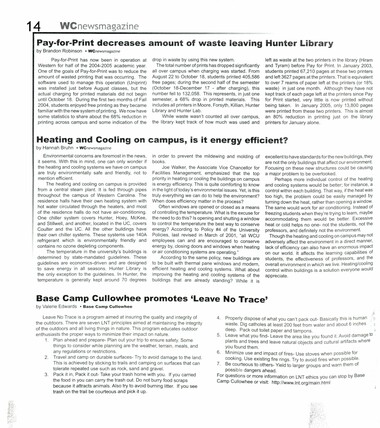

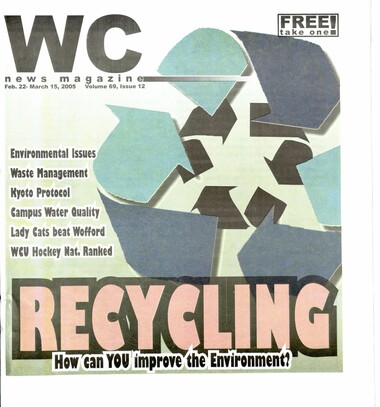
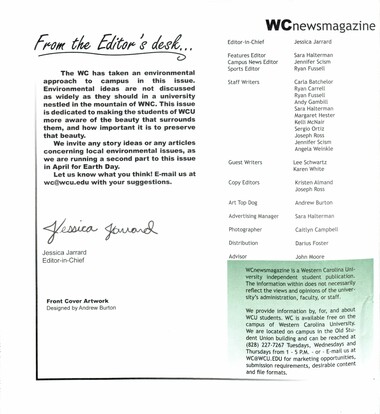
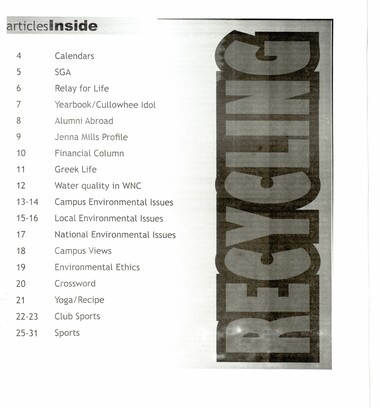
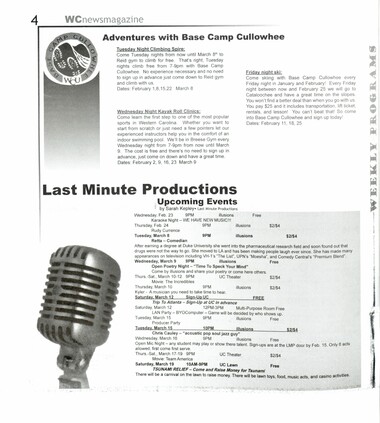
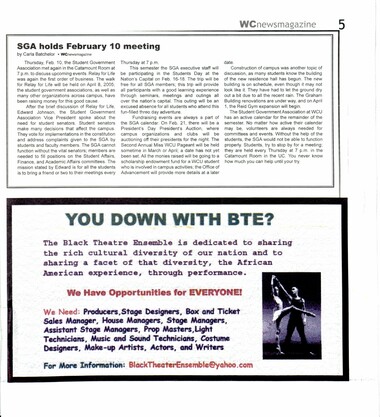

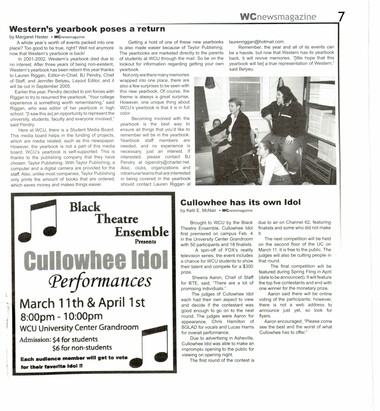
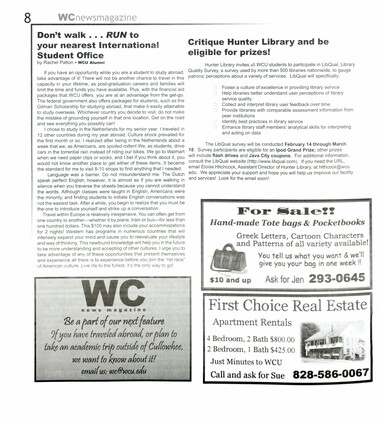


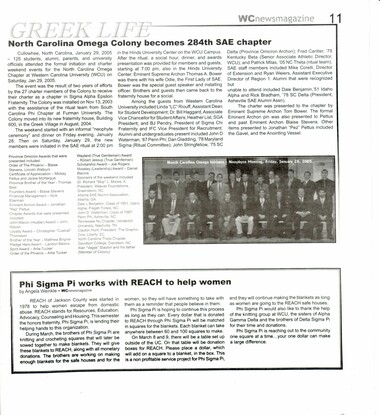

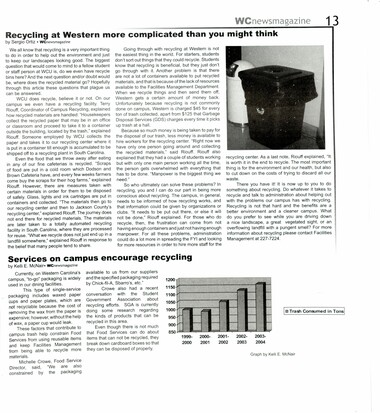
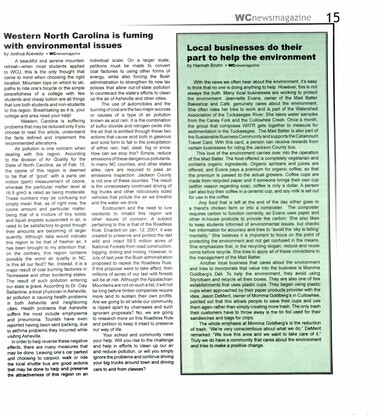
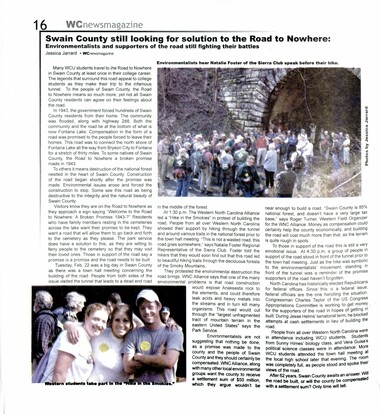

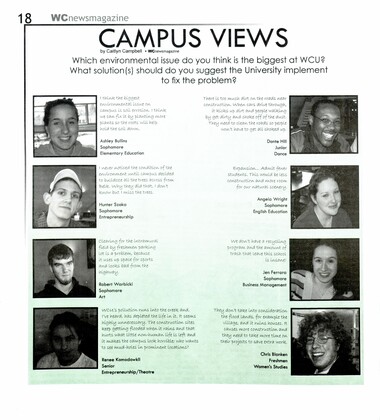
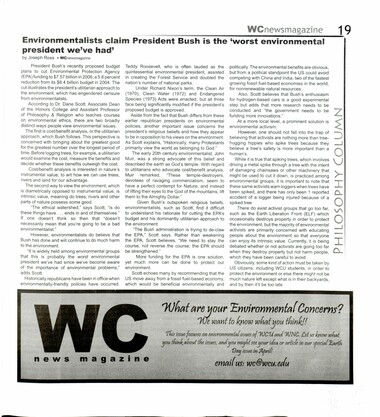
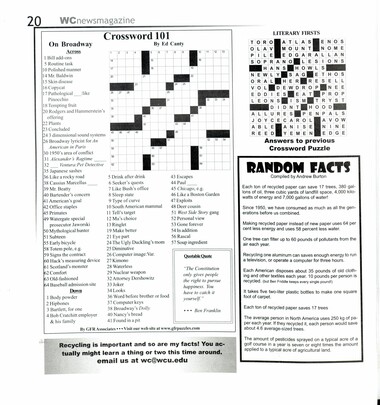


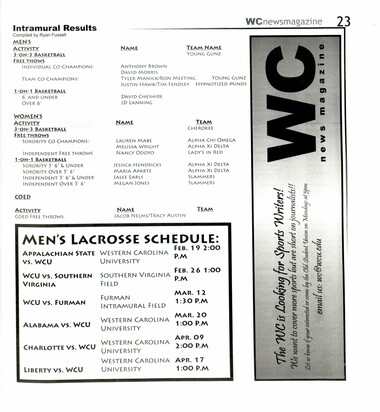
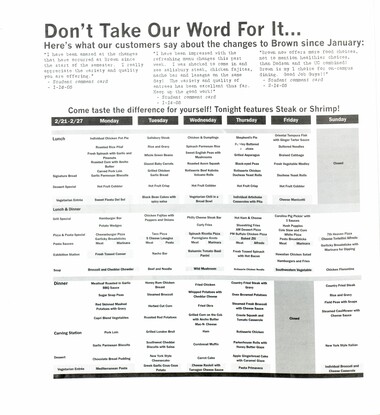


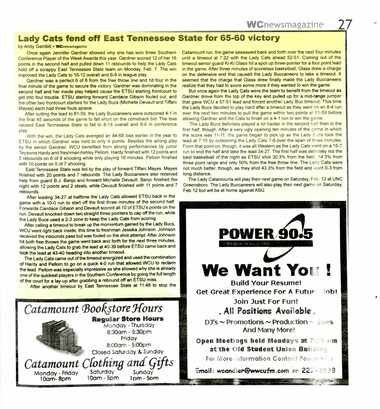
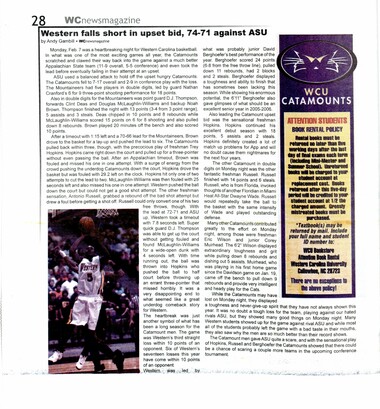
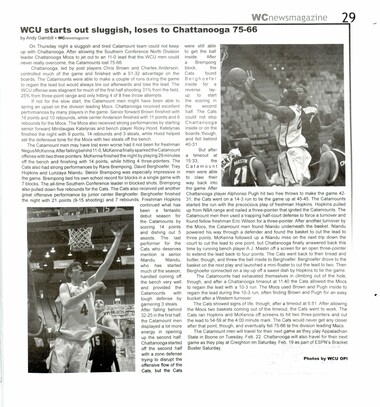
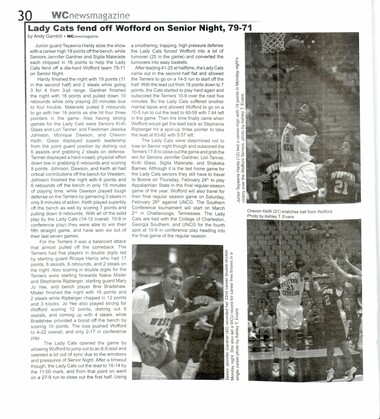
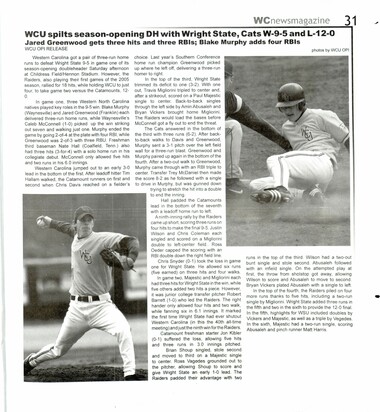
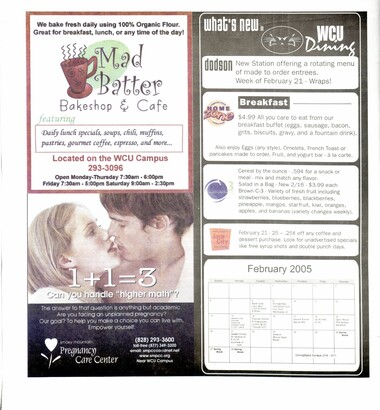
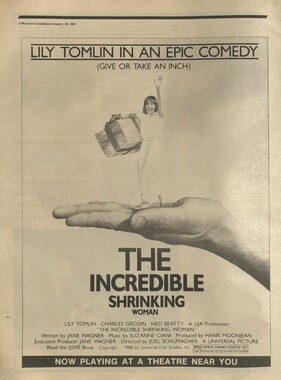
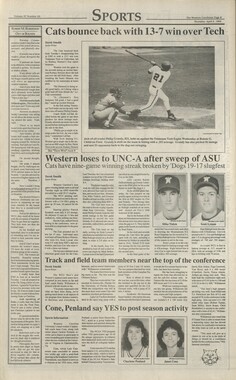
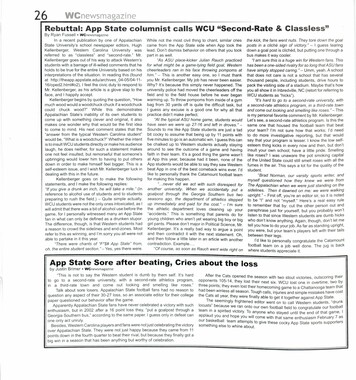

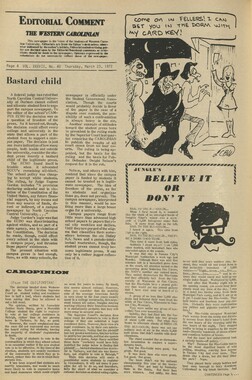
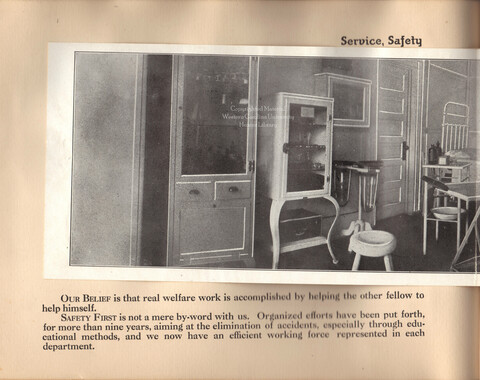



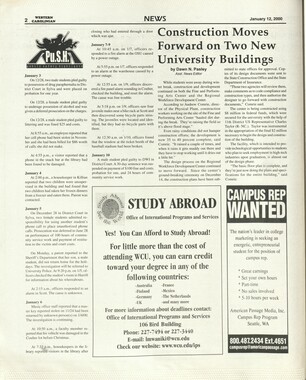
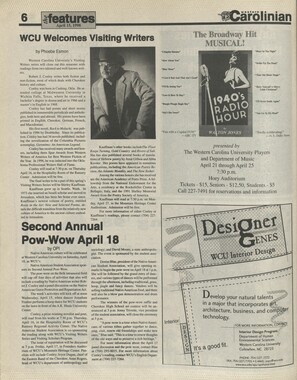
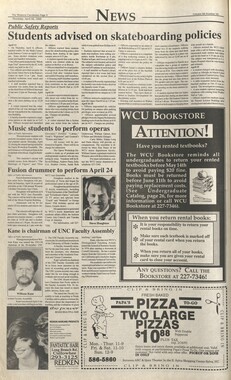
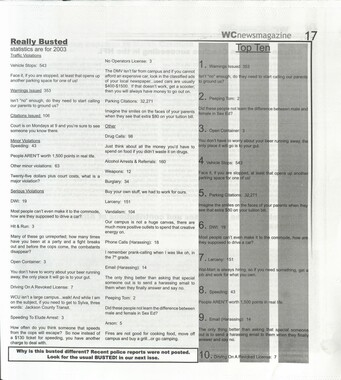
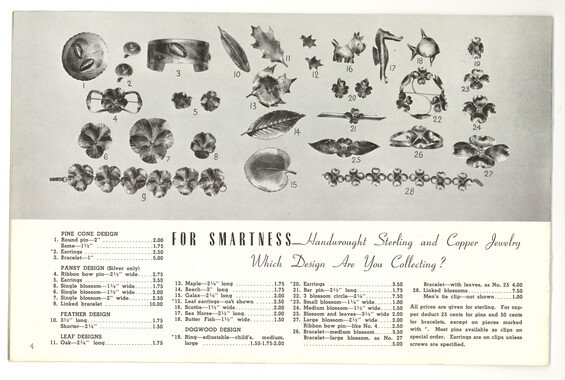
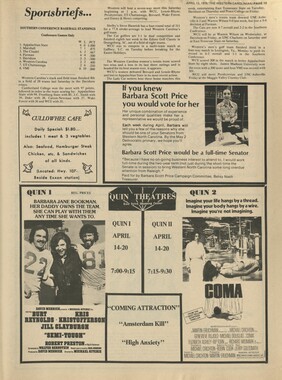
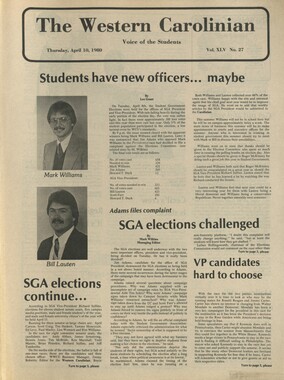
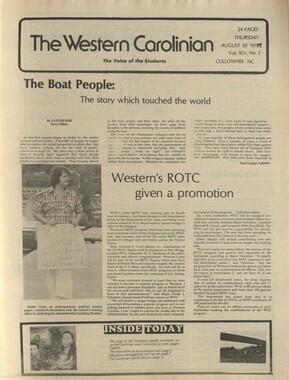

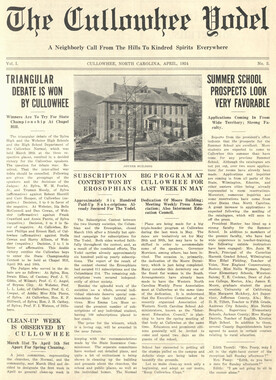
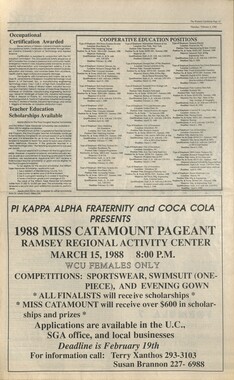


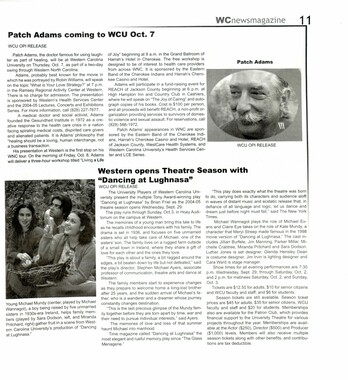
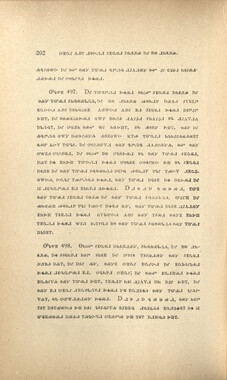
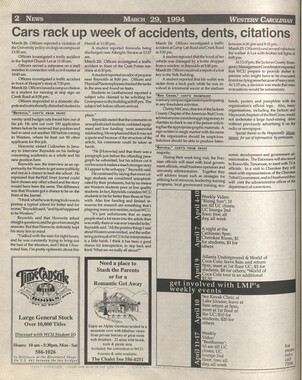

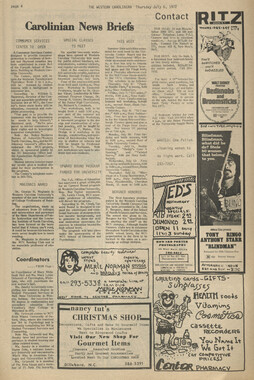
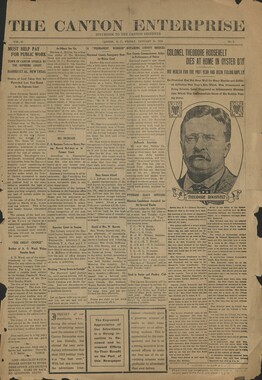
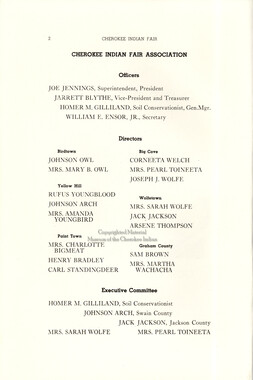
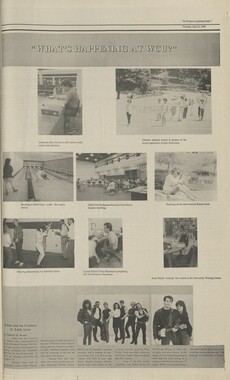
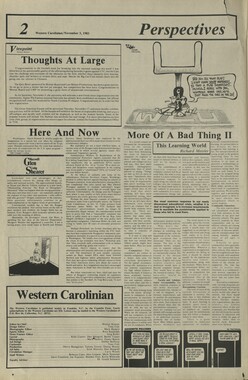
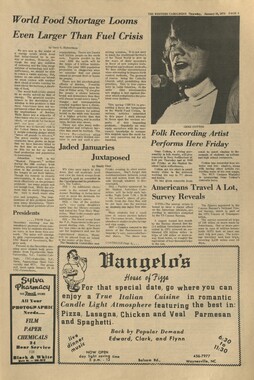
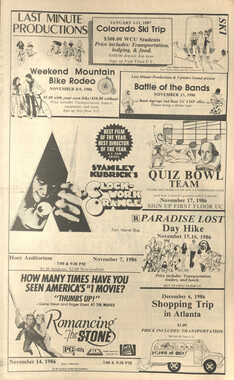


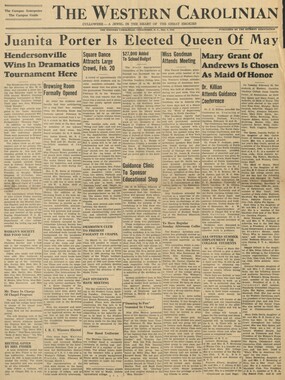
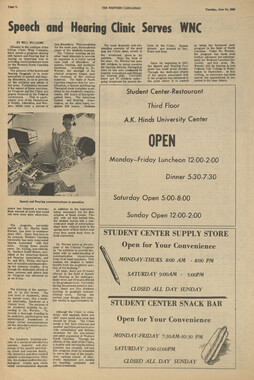
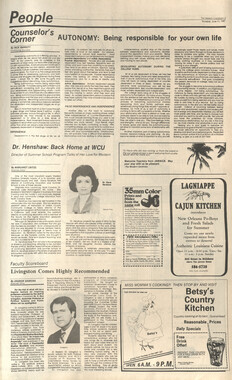
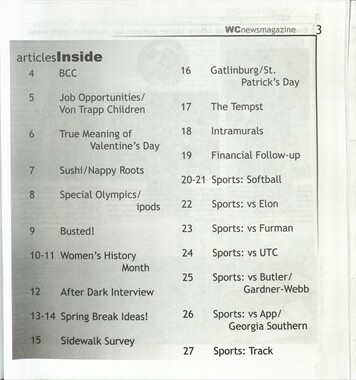
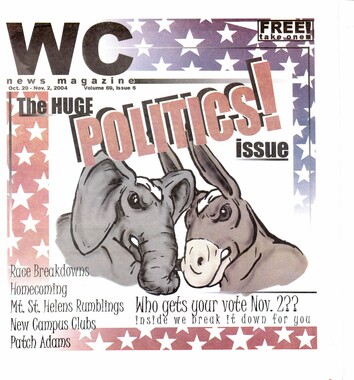
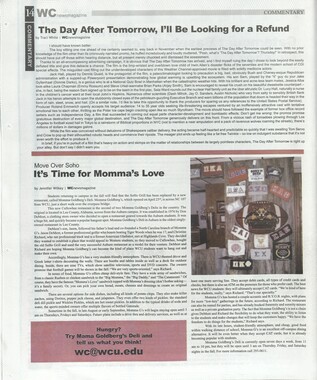
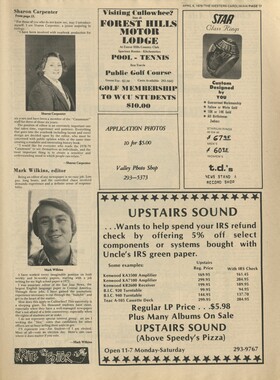
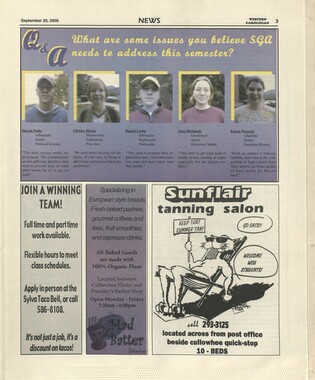

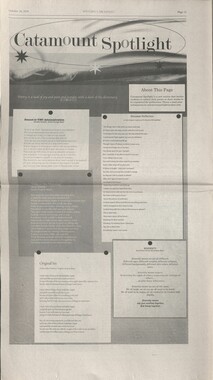
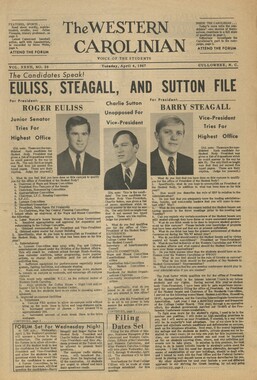
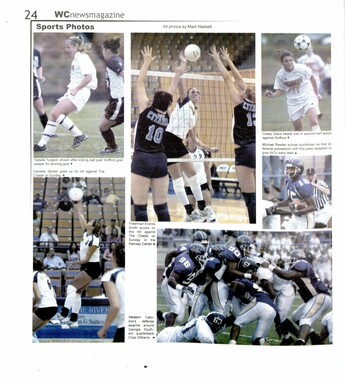

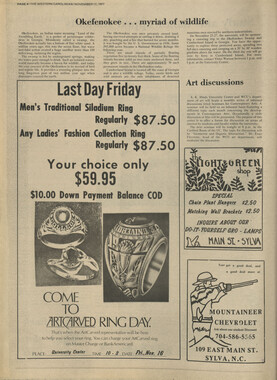
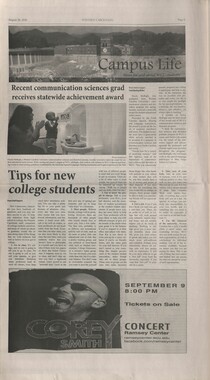
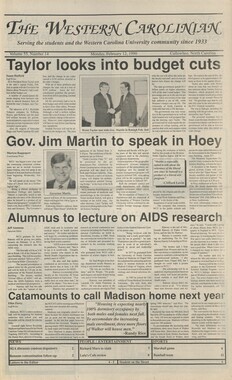
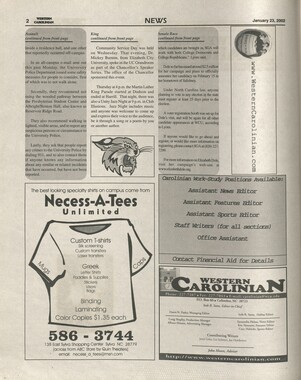
![hl_westerncarolinian_2004_[vol69_no04]_15.jpg](/media/w400h300/wcu_publications/hl_westerncarolinian_2004_[vol69_no04]_15.jpg)
